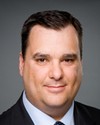Madam Charette, allow me to interrupt.
You are saying that you evaluated the programs and that they should include better performance indicators, etc. Do those people who are illiterate, or nearly illiterate, and all of the players who are assisting them, believe that, even if they could be improved upon, these programs were working well? How do those people evaluate these programs?
You talk about an operational tool, and that is all very well, but what do the people in the field think? Did the people affected do evaluations? Were they satisfied with the program? Were the people in the field advocating for major changes because the programs were not working? That could happen, and these people could ,they too, reach these conclusions.



